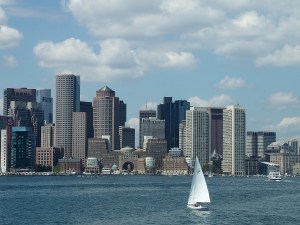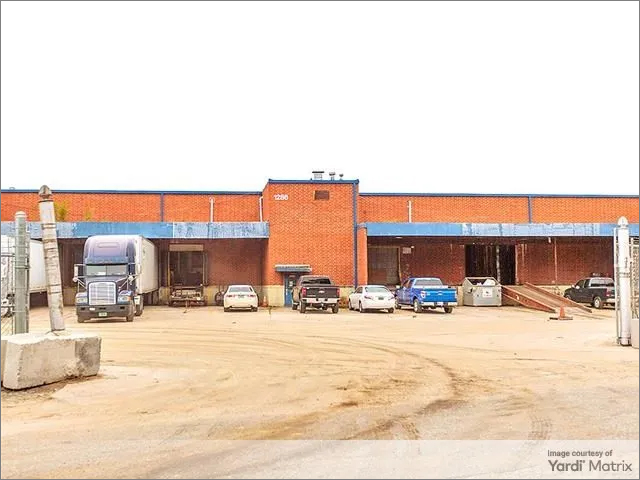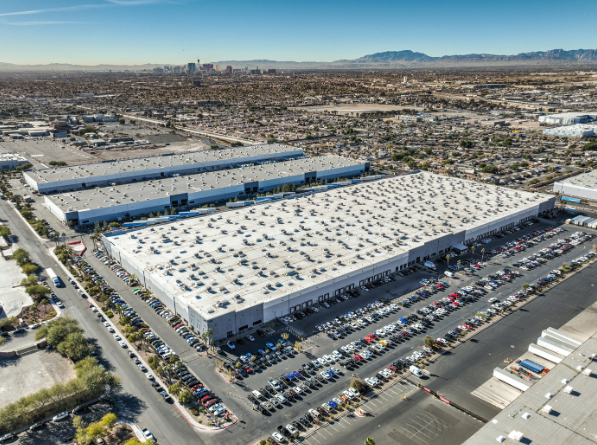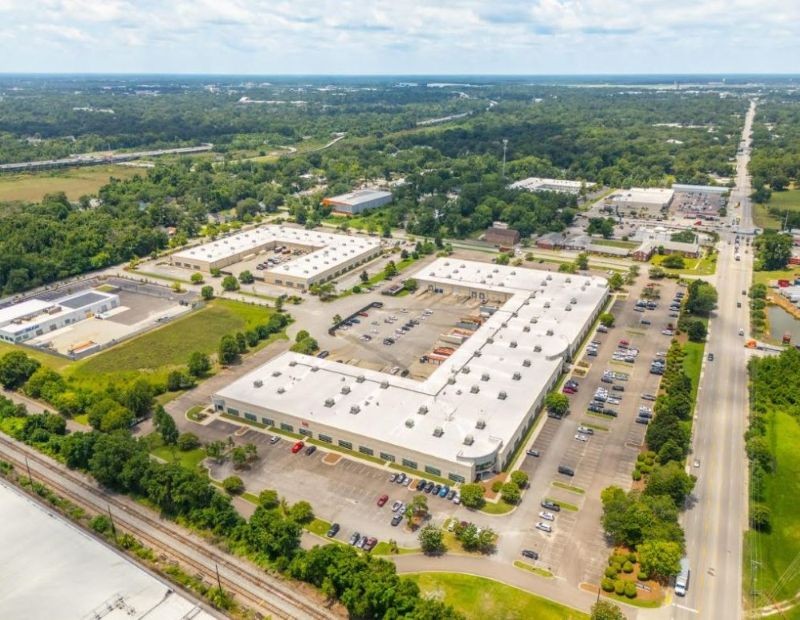How New Energy Goals Impact Boston’s Buildings
Jonah Stern of DBI Projects details the far-reaching implications of the city’s new ordinance.
Boston has joined the ranks of municipalities that have adopted regulations to help mitigate the effects of climate change by reducing emissions from buildings. In early October, the metro’s Acting Mayor Kim Janey signed an ordinance that will require all buildings over 20,000 feet to achieve zero carbon emissions by 2050.
The ordinance targets about 4 percent of the city’s structures—including commercial and residential buildings—that produce 60 percent of Boston’s building emissions. Buildings that are 35,000 square feet or larger will have to start meeting emissions caps in 2025, and those that are 20,000 square feet or larger by 2030.
Building Energy Reduction and Disclosure Ordinance 2.0 is an update to an earlier version, which requires buildings of 35,000 square feet and larger to report their water and energy usage annually. Building owners who fail to comply with these reporting requirements can face fines between $150 and $300 a day, depending on the size of their properties. The fines get steeper for failure to comply with emission standards—$1,000 a day for buildings larger than 35,000 square feet or 35 units, and $300 a day for buildings larger than 20,000 square feet or 15 units.
Commercial Property Executive discussed the implications of this new ordinance with DBI Projects Executive Jonah Stern, who manages nonprofit and educational development projects in the Greater Boston area.
Was this ordinance a surprise to Boston property owners or was this measure expected?
Stern: The BERDO 2.0 ordinance came in the wake of the original ordinance from 2013. Not only that, but Boston is also consistently ahead of the curve when it comes to foregrounding sustainability considerations. The fact that other cities like New York City, Los Angeles and Washington, D.C., have enacted similar legislation was another indicator that Boston wouldn’t be far behind.
What do you see as the biggest obstacles in meeting these goals?
Stern: Expanding BERDO’s reach to include buildings of 20,000 square feet or at least 15 units will likely impact greater numbers of individual, rather than institutional, owners than BERDO’s original target of 35,000-plus square-foot buildings. For these individual owners, there may be more obstacles around affordability and implementation than for institutional owners.
As with most large-scale policy measures, there is also the challenge of communicating clearly to the entire community that will be affected what specific actions they must take and, on top of that, motivating them to comply. Providing owners with the proper support and resources will be critical over the coming years.
It’s worth noting that the original BERDO was adopted eight years ago. In terms of society’s thinking about sustainability and the role of the built environment, that was a generation ago. The last decade has seen a lot of ideation and research around how energy-efficient building and maintenance practices can be beneficial not only to the environment but also to the owner, in the sense that the short-term utility usage savings can quickly offset the upfront costs of implementing those measures.
How is this ordinance different from New York City’s Local Law 97?
Stern: While similarly organized, BERDO is more ambitious. Local Law 97 compels New York City buildings of 25,000 square feet or greater to reduce emissions by 80 percent by 2050, whereas BERDO aims to bring Boston buildings of 20,000 square feet or greater to net-zero emissions by 2050.
What tools or resources are there available to help property operators comply with the new ordinance?
Stern: From a purely educational perspective, there are informational resources online, such as the Boston BERDO website and the Building Energy Retrofit Resource Hub.
BERDO 2.0 places a major responsibility on the owner’s shoulders, but they shouldn’t feel as if they have to take on this net zero carbon emissions directive completely alone. There are consultants who are very much dedicated to helping owners identify solutions that are uniquely suited to their assets and capabilities and can be naturally integrated into their long-term plans.
We’ve seen plenty of scenarios where owners undertake an initiative like this and get stuck halfway through. If owners are feeling unsupported, they shouldn’t hesitate to access project professionals who can be a much-needed guide and advocate for them as they strive to meet these requirements.
Are the consequences of unmet deadlines enough of an incentive to push property owners to invest in energy efficiency upgrades?
Stern: While monetary penalties are powerful drivers, the real incentive in this case is climate change and all its incalculable consequences. There’s increasing recognition that not acting collectively to make radical changes in the way we consume energy will result in something far worse than a fine. The financial—and quality-of-life—benefits of mitigating the impacts of climate change should be the motivating factor here rather than the penalties of not abiding by the ordinance’s requirements.
READ ALSO: Property Owners Face NYC’s Tough Emissions Law
Which methods for increasing a building’s energy efficiency do you recommend?
Stern: Methods for increasing energy efficiency fall into two buckets: finding alternate, clean sources of energy to help power the building, and modifying the building to use that energy more efficiently.
While incorporating alternate energy sources can be large scale and prohibitively expensive for many individual owners, measures like weatherization, adding insulation around heating systems, upgrading lighting, and inspecting and repairing HVAC systems are often cost effective and impactful. Many of these changes can be implemented over time as part of a phased strategy, taking into account the useful life of existing building systems.
Strategies should be tailored to individual buildings, factoring in the size of the building, location, age, the quality of its current systems, as well as the owner’s ability to afford certain measures over others. It sounds overwhelming, however there is a growing body of knowledge and experience that can help an owner see the big picture, mapping out the most viable strategies and defining a path towards energy efficiency that is effective and affordable.
What cost-effective solutions are there for older buildings, where energy efficiency was not included in the original design?
Stern: A lot of the cost-effective solutions already mentioned apply in particular to older buildings. Even if the notion of “sustainability” wasn’t part of the original design of older buildings, they tend to make more strategic use of natural ventilation and insulation, reflecting best practices that are commonly used today in efficient design.
From an operations standpoint, what major changes are we looking at?
Stern: Owners will be integrating new systems that require additional maintenance, so facility managers will have to be trained in their use and accommodate that usage into their day-to-day schedule. Deferred maintenance planning will need to consider the periodic upgrades and replacements of those systems that will occur just like any other building modification.
Another major change is the involvement of tenants/residents, who can play an active role in achieving these sustainability goals as well. Building owners should be intentional about educating tenants on the operation of new systems and initiatives to ensure they are participating in the effort and not hindering it due to lack of knowledge.
READ ALSO: Climate Change—A Story of Water, Conservation, Technology
How can tenants be engaged in improving energy efficiency and, implicitly, help in meeting the law’s goals?
Stern: We put a lot of emphasis on capital improvements, but the education and involvement of the tenants is critical to the effectiveness of many of the modifications that would be made to the building systems. Tenants can be active participants in achieving sustainability goals if they fully understand what’s expected of them and the collective benefit. As new building systems are introduced, landlords should ensure tenants are taught how to employ them to the greatest effect.
On an individual level, tenants can obviously reduce their water and power usage, as well as choose non-peak hours to make use of these resources.
What are the main challenges you encounter when helping your clients with new operational frameworks to reduce their buildings’ carbon footprint? How do you overcome them?
Stern: Cost is one of the biggest hurdles, especially if the client is trying to do a complete overhaul. If cost is an issue, we help our clients prioritize their efforts based on what their budgets will allow, saving less critical items for future periods when additional funding becomes available. The goal is for our clients to be able to reduce their building’s carbon footprint on a schedule that doesn’t strain their resources.
The intrinsic costs and logistics of retrofitting occupied spaces can be a significant challenge, particularly if tenants are caught off guard or unduly inconvenienced. We take the time to gather a clear picture of the building usage pattern and create a thoughtful implementation plan around it, minimizing disruptions to the extent possible. To this same end, leading communications with tenants/residents through memos, town halls, etc., taking their questions and concerns seriously, helps smooth a process that can be onerous for all involved.










You must be logged in to post a comment.